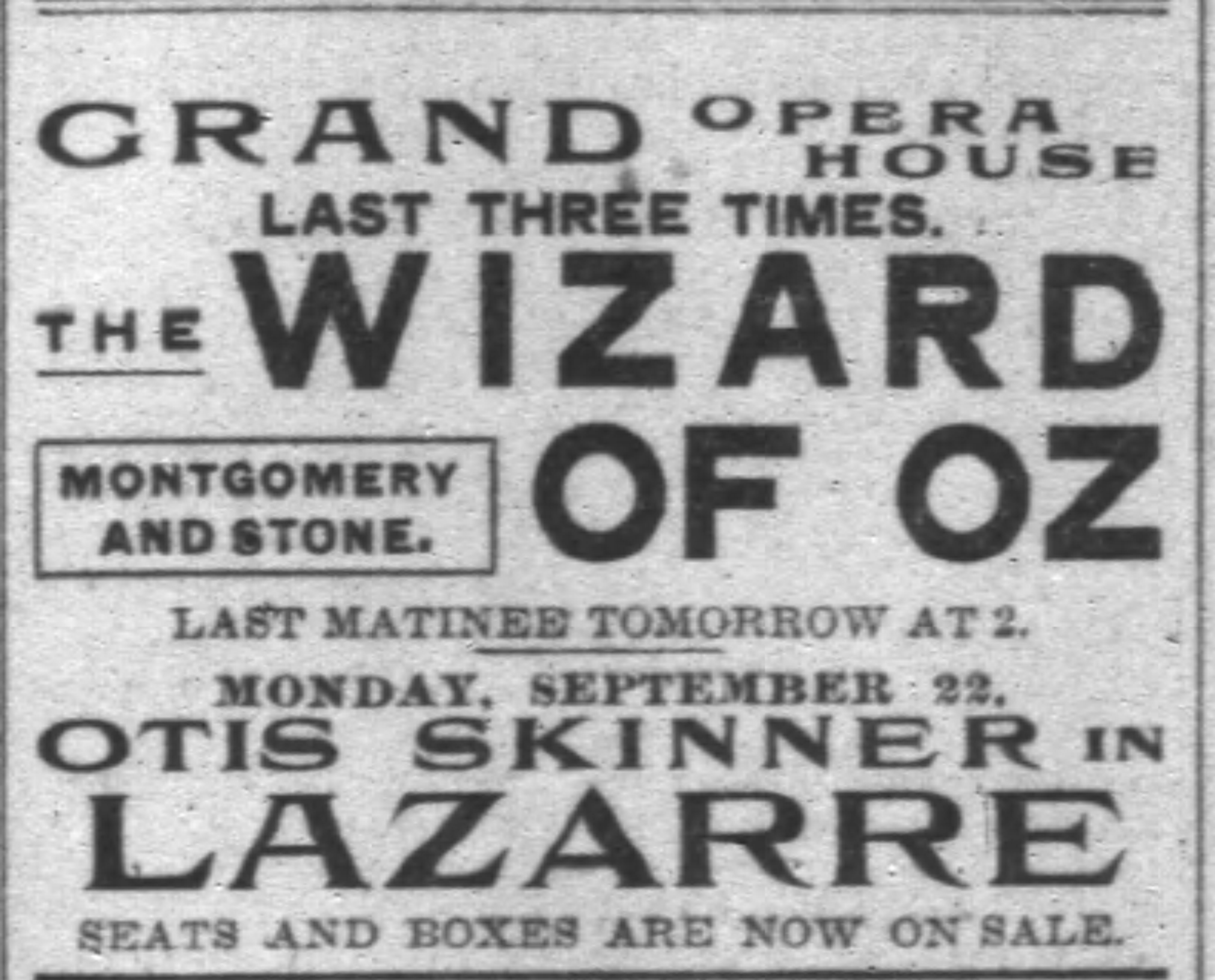 |
| Chicago World's Fair (1893) by Thomas Moran |
The World's Columbian Exposition or the Worlds Fair of 1893 brought unimaginable marvels to the city of Chicago, highlighting electric innovation and international culture, art, and architecture. This World's Fair marked the 400th celebration of Christopher Columbus' discovery of the New World. The fair spread over South Shore stretching through Hyde Park, Jackson Park Woodlands and Woodlawn. The Fair was established in a very short amount of time by means of sophisticated construction utilizing white stucco. The white buildings illuminated against the darker architecture that is Chicago. It was this very experience that influenced the development of one of America's greatest treasures, The Wonderful Wizard of Oz.
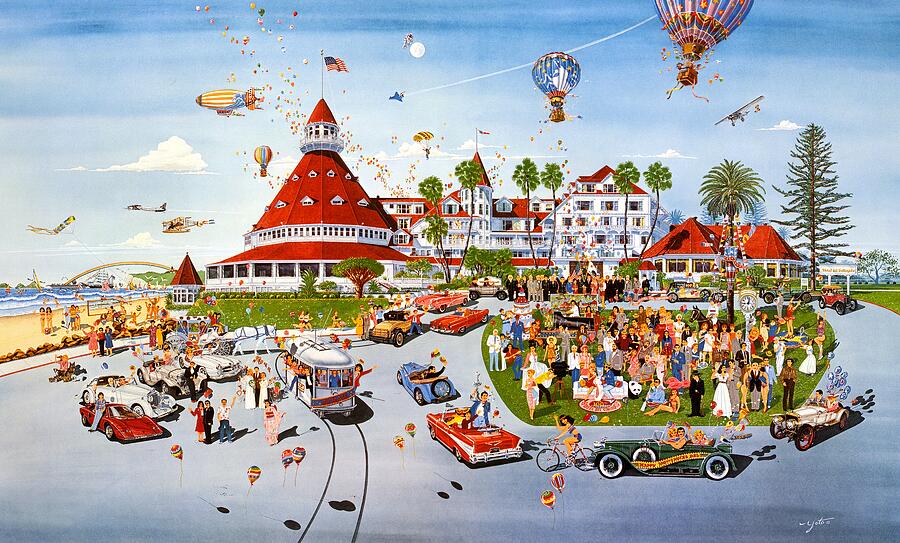 |
| Nostalgia Hotel Del Coranado by John Yato 2011 |
Over the last century many States have taken claim over the land of Oz. Kansas for obvious reasons boasts many museums and the official American Yellow Brick Road. Chittenango, New York, birthplace to famed author L. Frank Baum is home to many Oz related festivals. California has the historical Hotel Del Coronado in San Diego where Baum penned many of his later Oz tales. Seattle is called the Emerald City because it is lush with greenery. Nebraska has Omaha the word famously painted on the Wizard's Balloon in the 1939 film. Many cities continue to boast that Oz has a particular localized relevance but Chicago holds the flag, for it was the experience of Chicago that helped shape the novel.
 |
| L. Frank Baum, Los Angeles Times (1911) |
L. Frank Baum lived at 1667 North Humboldt Boulevard Chicago, Illinois, where now a simple plaque pays homage to the famed author. There he channeled his experiences of a changing world into a humble story for children an adults alike. Baum was born to a wealthy family in Chittenango, New York on May 15th, 1856. His development and experiences would be shaped by a life of travel. Early in his life he grew up on an estate outside of Syracuse called Rose Lawn, there he and his brothers and sisters were tutored and there he developed his imagination.
 |
| The Scarecrow as played by Fred A. Stone (1902) |
Baum suffered from night terrors as his powerful imagination was vivid and often haunting. Baum eventually revealed that it was on his childhood estate that he had a reoccurring nightmare in which he was being chased by a certain Scarecrow.
Baum was nurtured very closely because he had been born with a heart condition and at times had to refrain from too much physical activity. Baum's health would be the very thing that created necessity for departures from one town to the next. Perhaps the Tin-Man and his longing for a heart was Baum's desire for a stronger one himself. The notions however did not weigh him down, he was living during a time of remarkable innovation. In his lifetime he witnessed the development of electricity, the industrial revolution, and powerful political leaders. He also had a first hand experience with the Women's Suffrage Movement as he married one of the founding member's (Matilda Gage's) daughter, Maud Gage.
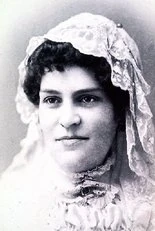 |
| Maud Gage Baum |
L. Frank Baum developed an early appreciation for the written word as a youth. After petitioning his parents for a printing press (, which were greatly advertised in children's magazines,) Baum created his first amateur journalism with The Rose Lawn Home Journal, a monthly paper that explored literature, poetry and the art of stamp collecting. Baum's interest in stamps would lead to the development of his first book, Baum's Complete Stamp Dealers Directory. Baum's interests would bounce from one unique experience to another. He would later produce a monthly poultry column, The Poultry Record after he and his family developed the interest of breeding chickens. Baum found his first commercial success with the publication of The Book of Hamburgs, which hi-lighted his experiences and understandings with poultry farming.
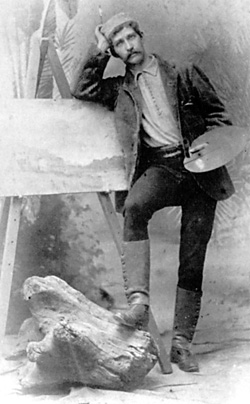 |
| L. Frank Baum as Hugh Holcomb in THE MAID OF ARRAN (1882) |
Baum's growing interests eventually shifted into the theater where he could write and produce. Baum moved to Richburg, New York to pursue his interests as a Thespian. By 1882 he had written three complete productions. His first theatrical success came from an adaptation of a Scottish novel titled A Princess of Thule (1877) written by William Black. His play, The Maid of Arran found such success in his hometown that he eventually took it on the road traveling throughout New York and across the continent. This would be Baum's experience seeing the Kansas plains. Baum wrote several other plays that were never produced. His theatrical success would only be matched once again with his musical extravaganza adaptation of The Wonderful Wizard of Oz.
 |
| Aberdeen, Photo by L. Frank Baum (1888) |
Baum, after marrying Maud Gage moved the the Dakota Territory to a town called Aberdeen. Less driven by his theatrical career he wanted to make a home for his wife and his first child. South Dakota was the place for business opportunities. Baum's first opportunity in Aberdeen was with amateur photography for a publication called The Aberdeen Daily News. He used his early success to finance Aberdeen's first novelty store called Baum's Bazaar. Frank, as he liked to be called, and Maud were very social, they both attended card parties, dances and regularly sat down with mediums. They shared unconventional spiritual views and were unafraid to explore them. Eventually they would enter the Theosophical Society which was developed around the famous and mysterious Helena Blavatsky. Baum thereafter took over a weekly publication called the Dakota Pioneer, renaming it, the Saturday Pioneer, this paper among other things examined the changing world where Baum could write about anything from electrical inventions to women's suffrage. It was here that Baum may have been inspired to write about the Good Witch Glinda and her powerful Book of Records (A Book that details global events as they are happening).
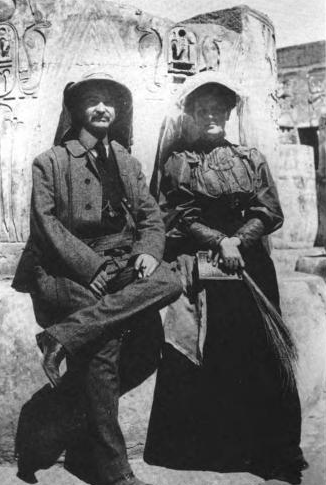 |
| Maud and Frank in Egypt 1906 |
By 1891 many people were deserting the Dakota Territory, and Baum's Bazaar went under. L. Frank Baum's heath conditions pushed the family into a new direction. Baum quickly accepted a job with the Evening Post of Chicago. He was mindful to take his family in that direction because the World's Columbian Exposition was set to open in 1893. There business was sure to be booming. Baum disliked the Evening Post so much that after only a month he left and found work as a traveling China Salesman. This delicate work surely inspired the Dainty China Country in The Wonderful Wizard of Oz.
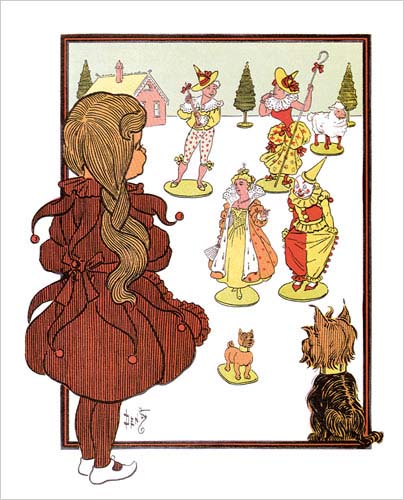 |
| The Dainty China Country, W. W. Denslow (1900) |
It was somewhere between May and October of 1893 that L. Frank Baum made his way to the Chicago World's Fair which was the splendor that influenced the famed Emerald City. The White City as it was called, glistened with electrical wonder powered by General Electric who at the time was backed by Thomas Edison and J. P. Morgan. Here Baum was inspired by the theatrics put into spectacle, from a distance the fair looked as if built by marble. The elaborate statues were unprecedented, but it was all fake, it was all stucco painted like marble.
 |
| Architectural Building World's Columbian Exposition (1893) |
"The impressive, dazzling palaces that glinted on the edge of Lake Michigan were, in truth, hurriedly erected temporary sheds painted to look like marble; the Fair was a film set before cinema had been invented. The numerous impressive sculptures that adorned the palaces weren't hewn from marble, but were rather made from staff, a lightweight mix of plaster, cement and fibers (a kind of Plaster-of-Paris). So the grand palaces were actually storage sheds covered in a veneer of plaster that was most usefully employed to reset broken bones.The White City's combination of beauty and phoniness influenced Baum in his creation of the Emerald City."--- Rebecca Loncraine, The Real Wizard of Oz
 |
| The White City (1893) |
L. Frank Baum's further influence with whimsy might have been driven by witnessing the invention of many things and experiencing them at the Fair, there were Cracker Jacks, phosphorescent lamps, bubble gum, moving walkways and the very first Ferris Wheel built by George Ferris, measuring 264ft high.
 |
| L. Frank Baum (1904) |
The Wizard of Oz is a fictional tale, but it certainly highlights all of L. Frank Baum's various experiences: traveling by train though the Kansas Prairie, his delicate heart condition, his dreams of a certain Scarecrow, the wizards of deception behind the World's Fair, etc. The Wonderful Wizard of Oz was published in 1900. The success carried Baum into the literary world of immortality. He immediately developed the book into a musical comedy extravaganza which debuted in Chicago's Grand Opera House in 1902 and later became a smash hit on Broadway in 1903.
The success of his show led to the development of further Oz productions. Eventually, in his late life Baum journeyed into Hollywood where he made several attempts to translate his stories to screen. Before the famed movie of 1939 the Wizard of Oz had seen several silent film adaptations. Baum was left nearly bankrupt in his attempt to get his story to it's greatest translation. Perhaps he knew how powerful it could be. L. Frank Baum died at the age of 63 in 1919, just 20 years before the famous MGM classic film was developed. Now there is not one person who is unfamiliar with the Lion, the Scarecrow and the Tin Man.
 |
| Shirley Temple as Tip in The Marvelous Land of Oz 1960 |
 |
Dorothy (Fairuza Balk),Disney's Return to Oz (1985)
|
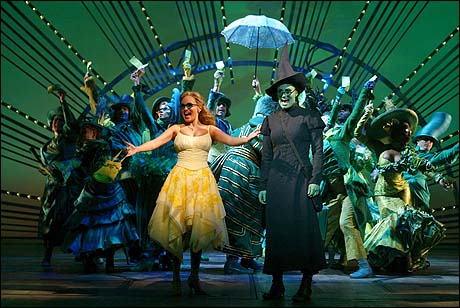 |
| Playbill (2003) Kristen Chenoweth & Idina Menzel |
L. Frank Baum is most notably honored by Oz Park in Chicago, Illinois. The park was developed to pay homage to Baum's Oz, an expansive area rich with a grand flower garden and 4 marvelous sculptures displaying Dorothy and her dearest companions. The Park was dedicated in 1976, bordering Webster and Larrabee Streets on Chicago's North side.
 |
| Oz Park, Chicago Illinois Photo by: Ron Szematowitcz |
For more information on Chicago visit: Chicago Day Tripping
Source Material:
- The Man who was L. Frank Baum --- http://articles.chicagotribune.com
- Chicago Tribute Markers of Distinction --- http://www.chicagotribute.org
- The Wizard in the White City --- http://backstoryradio.org
- Wikipedia.com
- Life Magazine: The Wizard of Oz: 75 Years Along the Yellow Brick Road, Time Home Entertainment Inc. 2013
- The Wizard of Oz: Celebrating 75 Years of Movie Magic, I-5 Publishing 2014
- The Annotated Wizard of Oz: L. Frank Baum, W. W. Norton & Co. Inc. Michael Patrick Hearn 1973


